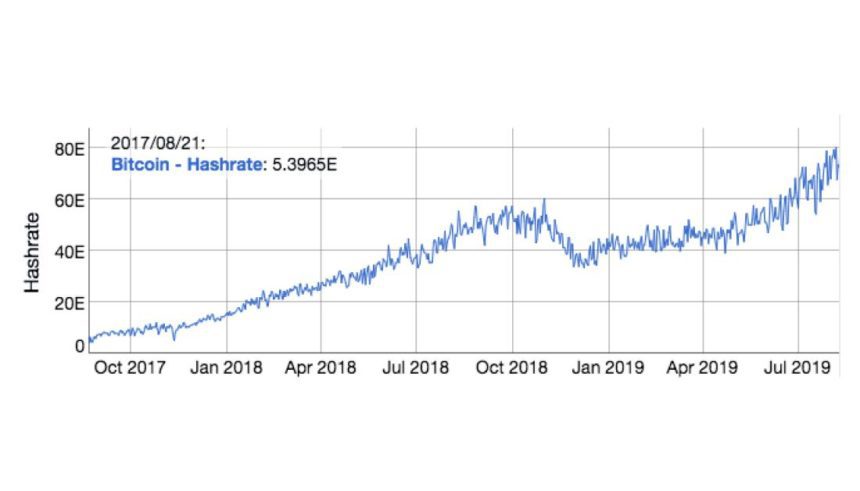Summer has reached its end and given way to autumn. Cryptocurrency markets have also cooled down a bit with the change of the season, as Bitcoin and other leading altcoins have plummeted in price from their summer highs. Nonetheless, the king of crypto remains strong – and new estimates suggest its dominance may be even stronger than expected.
Every now and then Bitcoin is also accused of being linked to criminality, such as drug markets or money laundering. This week we will take a stance against this common claim with some fresh reports. Bitcoin is certainly used by criminals like any other functioning currency, but an overwhelming majority of its use is legal and morally acceptable.
In other news we have warnings about vulnerabilities found in Lightning Network projects as well as a sweaty report from the world’s first crypto triathlon organized in Central Europe.
The previous weekly news can be found here.

Bitcoin has the potential to be a real world currency – and for many it already is.
Bitcoin may be even stronger than expected
Bitcoin’s dominance, meaning its share of the combined market value of all cryptocurrencies, is approximately 70% based on statistics by CoinMarketCap. However, according to Forbes a new study seems to indicate the real number is closer to 90%.
Analysts from Arcane Research have published a new research report, according to which bitcoin’s dominance rises if cryptocurrencies are related based on liquidity. Bitcoin is much easier to exchange and use than any other cryptocurrency, and using many other cryptocurrencies often requires a step through bitcoin.
According to the report bitcoin’s dominance could with these criteria be overwhelmingly bigger than all other cryptocurrencies combined. Even the biggest competing cryptocurrency systems, such as Ethereum, Ripple and Litecoin, only form 10% of the total market cap.
“Every day bitcoin stays ahead, it becomes less likely that any other cryptocurrency can compete as money,” stated Bendik Nordheim, an analyst from the study.

Bitcoin might be even more superior than general statistics indicate.
Bitcoin miners have faith in rising prices
Even though bitcoin’s price has fallen from its earlier highs this year, miners seem to remain optimistic about the cryptocurrency’s price development. According to data analytics firm Skew Markets miners feel bullish despite the recent pullback on the markets.
Skew Markets reports that major mining parties are expanding their mining capacity in order to mine more bitcoins. This generally means miners believe they will be able to sell these bitcoins for a higher price exceeding the cost of their mining.
Skew Markets seems to have some ground for their claims, since the Bitcoin network’s combined mining capacity reached an all-time record last week.
We also have the halving of block rewards looming right around the corner next year. Right now 12,5 bitcoins are generated in the world every 10 minutes. After next year’s halving there will only be 6,25 bitcoins generated every 10 minutes.

Miners have increased faith in rising prices despite market fluctuations. (PICTURE: Skew Markets)
Less than 10% of crypto mixer use linked to criminality
According to blockchain analytics company Chainalysis only 8,1% of all transfers sent to crypto mixers are linked to illegal activities. Chainalysis reported its findings in a recent webinar.
Cryptocurrency mixers, or tumblers, are services that provide users increased privacy by mixing crypto transfers with each other and obscuring their origin. Bitcoin and many other cryptocurrencies use a public blockchain, whereby it is possible to trace transfers in the blockchain.
Crypto mixers are often claimed to be involved in crypto-related criminality. However, according to Chainalysis they are much more widely used for legal activities. Approximately 40% of transfers to mixers are sent by legal exchanges tending to the safety of their customers, while 26,8% are sent from other mixer services. According to Chainalysis this indicates mixers are using each other to give mixing additional security.
While mixers are used notably more for legal than illegal activities, they still seem to be a popular target for hacked or extorted crypto.

Bitcoin mixers give different parties completely unrelated bitcoins by mixing and obscuring their origins.
Palestinian civilians use bitcoin more than terrorists
The terrorist organization Hamas has transferred tens of thousands of dollars worth of bitcoin, reports New York Times. However, according to CoinDesk this number is dwarfed by the boom of legal bitcoin use in Gaza and Palestine amounting to millions.
“There are offices that transfer $5 to $6 million dollars a month. I’ve seen a local trader send 100 BTC in one transactions. There are also a lot of smaller clients,” states local bitcoin user and developer Ismael Al-Safadi.
Based on CoinDesk’s data there are about 20 bitcoin dealers operating in Gaza. Bitcoin is one of the few ways in which Gaza-based developers, content producers and freelancers can accept international payments due to different economic sanctions.
Al-Safadi himself receives roughly 70 percent of his montly income in bitcoin. He estimates there are more than 10 000 bitcoiners in Gaza using the cryptocurrency more or less regularly.

Bitcoin has much more to offer normal palestinians than terrorists.
Bitcoin coder warns Lightning Network users of vulnerabilities
Rusty Russell, an Australian software programmer and Bitcoin’s Lightning Network developer, has warned users of vulnerabilities found in the Lightning Network. According to Russell, security issues have been detected in several Lightning projects which could potentially cause loss of funds.
In a tweet published on 30th of August, Russell encouraged everyone operating Lightning Network nodes to update their software urgently. The warning applies to all versions of c-lightning preceding 0.7.1, lnd prior to 0.7 and eclair versions older than 0.3.
The Lightning Network is a second-layer scalability solution built on top of Bitcoin’s blockchain. While still at an experimental stage, the project is expected to enable notably cheaper and faster bitcoin transactions. If successful, the Lightning Network may be instrumental in Bitcoin’s rise to a true globally used currency.

The Lightning Network has enormous potential to electrify bitcoin use – but first it must conquer its challenges.
Crypto sported its way on the world map
The world’s first crypto triathlon was organized between the 24th and 28th of August. In the event seven athletes from three countries struggled through a journey of 357 kilometers. The event was organized to promote the future potential of cryptocurrencies, blockchains and Bitcoin’s original ideals.
Starting in Switzerland and concluding in Germany, the triathlon comprised of 22 kilometers of swimming, 280 kilometers of cycling and 63 kilometers of running. The event was sponsored by bitcoin payments and received much local and international media attention.
One of the most well-known participants was Local Bitcoins’ founder and crypto veteran Jeremias Kangas. Jeremias Kangas from Team Satoshi, how do you feel now?
”Quite alright, now that the endurance is over. I only partook the first day which was 2,3 kilometers of swimming, 99 kilometers of cycling and 23 kilometers of running, so in the half-ironman class. My own condition reached its limits, but others fought on for another three days,” Kangas comments.

”I sported very hard,” Jeremias Kangas told Coinmotion. (PICTURE: Jeremias Kangas)

